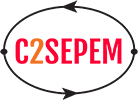
We are happy to announce the release of the 3.0 version of the BerkeleyGW software package for excited states, using the GW method and the GW plus Bethe-Salpeter equation (GW-BSE) method to solve, respectively, for quasiparticle excitations and optical properties of materials. BerkeleyGW is a general code based on quantum many-body perturbation theory that is applicable to a large variety of materials from bulk crystals to molecules and 2D/1D materials, and is applicable to insulating, metallic, and semi-metallic systems.
The source code is freely available at: https://berkeleygw.org/download/.
Below are some highlights of the new features in the 3.0 release.
BerkeleyGW-3.0 Release Notes
- Full, two-component spinor wavefunctions support — enabling investigation of strong spin-orbit coupling (SOC) effects in GW and GW-BSE studies;
- Exciton states with finite center-of-mass momentum Q, i.e., the exciton band structure;
- Broader support for DFT starting points of different exchange-correlation functionals, including: LDA, GGA, hybrid, meta-GGA, DFT+U, etc.;
- New support for GPU acceleration, in addition to the standard many-core CPU implementation;
- Improved support to the latest Quantum Espresso (v6.x), in addition to existing support to other DFT codes (e.g., ABINIT, Octopus, PARATEC, PARSEC, RMGDFT, SIESTA, TBPW, …);
- I/O performance improvements;
- New tools for wavefunction self-consistent GW calculations;
- Improved performance, tools and documentation for new and existing features;
- Additional examples on public repository: https://github.com/BerkeleyGW/BerkeleyGW-examples;
- Several bug fixes and improved compilers/libraries support.
– The BerkeleyGW Development Team

